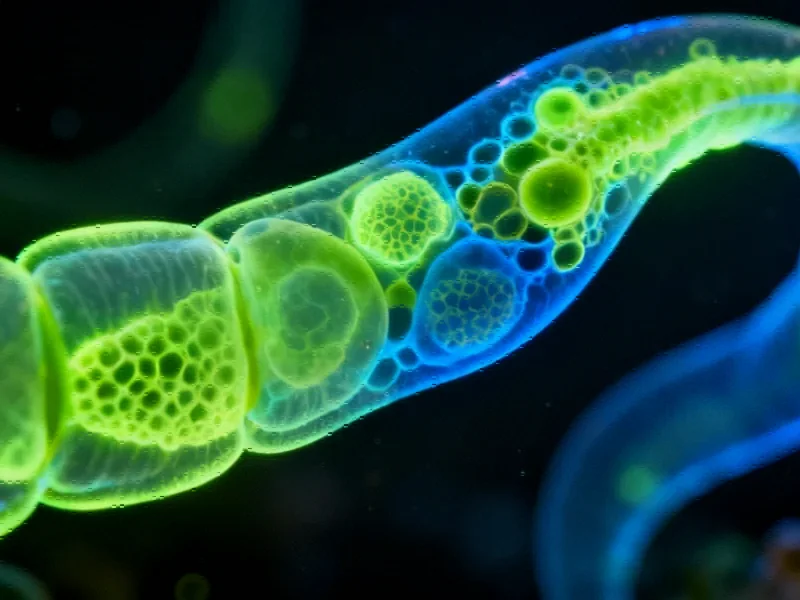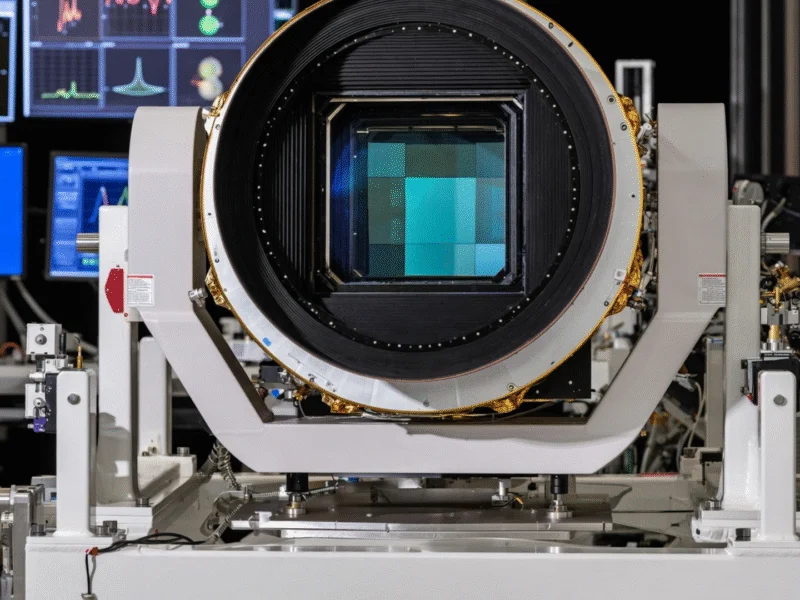Stem Cell Paradigm Shift: How Distant Signals Control Regeneration
In a groundbreaking discovery that challenges decades of biological understanding, researchers at the Stowers Institute for Medical Research have revealed that planarian flatworm stem cells operate fundamentally differently than those in most organisms. Unlike human stem cells that take instructions from immediate neighbors, these remarkable cells respond to signals from distant body regions—a finding that could revolutionize regenerative medicine approaches.
The study, published in Cell Reports on October 15, 2025, was led by Dr. Frederick “Biff” Mann from the laboratory of Dr. Alejandro Sánchez Alvarado. Their work directly confronts the long-established concept of the stem cell “niche”—the specialized microenvironment where neighboring cells traditionally direct stem cell behavior through direct contact and local signaling.
Redefining Cellular Independence
“For instance, human blood-forming stem cells reside in niches within bone marrow where they divide to self-renew and make new blood cells,” explained Mann. “However, we’ve now shown having a normal niche may not be essential for stem cells to work. Some stem cells, like those in the planarian flatworm, have figured out a way to be independent and can turn into any type of cell without needing a nearby niche.”
This independence may explain the flatworm’s extraordinary regenerative capabilities. Planarians can rebuild an amputated head or regenerate an entire body from just a tiny fragment—abilities that have fascinated scientists for generations. The research suggests this regenerative power stems from stem cells that act more autonomously than their counterparts in other animals.
These findings represent significant industry developments in our understanding of cellular communication and regeneration mechanisms.
Spatial Transcriptomics Reveals Surprising Neighbors
Using the emerging technology of spatial transcriptomics, the research team could map which genes are activated not just within individual cells but throughout surrounding tissues. This approach revealed unexpected cellular neighbors, including a previously uncharacterized cell type with numerous projections extending from its membrane.
The team named these cells “hecatonoblasts” after Hecatoncheires, a Greek mythological monster with many arms. “Because they were located so close to stem cells, we were surprised to find that hecatonoblasts were not controlling their fate nor function, which is counterintuitive to a typical stem cell-niche connection,” said Mann.
This discovery highlights how recent technology continues to reshape our understanding of biological systems at the cellular level.
Long-Distance Cellular Communication
Instead of local control, the strongest instructions came from intestinal cells located a considerable distance from the stem cells. These distant cells provided planarian stem cells with positional and functional guidance during regeneration processes.
“I tend to think about this as local versus global communication networks,” explained co-corresponding author Dr. Blair Benham-Pyle, now an Assistant Professor at Baylor College of Medicine. “While interactions between stem cells and their neighboring cells influence how a stem cell reacts immediately, distant interactions may control how that same stem cell responds to big changes in an organism.”
The team’s findings suggest that planarian stem cells are effectively uncoupled from traditional contact-based niches. “We found that there isn’t a specific cell type or factor right next to stem cells that is controlling their identity,” Benham-Pyle noted.
Regenerative Medicine Implications
Understanding how to harness this distant signaling could transform approaches to tissue repair in humans. “The more we understand how nearby cells and overall signals in the body work together to boost the ability and power of our stem cells, the better we’ll be at creating ways to improve the body’s natural healing,” said Sánchez Alvarado.
This knowledge could lead to breakthrough treatments for conditions requiring tissue regeneration, potentially offering alternatives to current limitations in medical classification systems that sometimes restrict innovative approaches.
Balancing Regenerative Potential and Cancer Risk
Adult planarian stem cells possess unlimited potential to become any cell type, unlike human stem cells that are tightly regulated to produce only specific specialized cells. This control system helps prevent unchecked cell growth—a hallmark of cancer development.
“Our hope is to uncover the basic rules that guide stem cells to become specific tissues as opposed to going rogue, as most tumors in humans begin when stem cells stop following these rules,” explained Sánchez Alvarado.
This research direction aligns with other related innovations in cellular regulation and cancer prevention strategies being explored across the scientific community.
Dynamic Cellular Environments
Perhaps the most revolutionary aspect of the discovery is the dynamic nature of the planarian stem cell environment. “The most surprising finding is that, at least in planarians, the environment in which the stem cells reside is not fixed,” said Sánchez Alvarado. “Instead, it’s dynamic—where stem cells reside is essentially made up by ‘friends’ that the stem cells and their progeny make along the way to differentiation.”
This understanding of cellular dynamics could influence multiple fields, including approaches to energy systems that similarly require complex coordination between components.
Future Research Directions
The research opens numerous avenues for future investigation. Scientists now aim to identify the specific signaling molecules that facilitate this long-distance communication and determine whether similar mechanisms might exist in more complex organisms, including mammals.
As artificial intelligence platforms continue to advance, they may help model these complex cellular communication networks, potentially accelerating discoveries in regenerative biology.
Broader Scientific Impact
The implications extend beyond regenerative medicine. Understanding how cells coordinate across distances could influence fields from developmental biology to tissue engineering. The discovery challenges fundamental biological concepts while offering practical pathways toward medical advancement.
These findings contribute to ongoing market trends in biotechnology that prioritize understanding fundamental biological mechanisms as a pathway to therapeutic innovation.
As research continues, the team’s work on cellular regulators may intersect with mitochondrial function studies, potentially revealing connections between energy production and regenerative capacity.
The complete study, “Molecular and cellular characterization of planarian stem cell microenvironments,” represents a significant step toward understanding nature’s most efficient regenerative systems and how we might eventually apply these principles to human medicine. For those interested in the detailed implications of this research for future medical applications, additional context is available through this comprehensive analysis of flatworm regeneration research.
This article aggregates information from publicly available sources. All trademarks and copyrights belong to their respective owners.
Note: Featured image is for illustrative purposes only and does not represent any specific product, service, or entity mentioned in this article.



